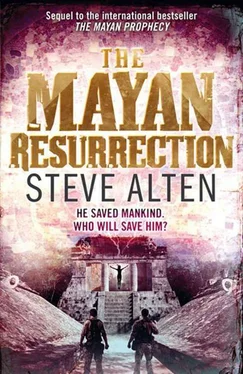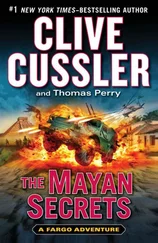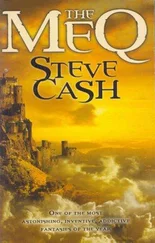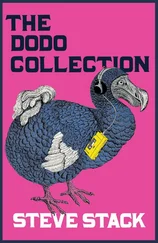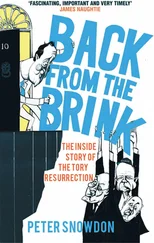Steve Alten - The Mayan Resurrection
Здесь есть возможность читать онлайн «Steve Alten - The Mayan Resurrection» весь текст электронной книги совершенно бесплатно (целиком полную версию без сокращений). В некоторых случаях можно слушать аудио, скачать через торрент в формате fb2 и присутствует краткое содержание. Жанр: Триллер, на английском языке. Описание произведения, (предисловие) а так же отзывы посетителей доступны на портале библиотеки ЛибКат.
- Название:The Mayan Resurrection
- Автор:
- Жанр:
- Год:неизвестен
- ISBN:нет данных
- Рейтинг книги:3 / 5. Голосов: 1
-
Избранное:Добавить в избранное
- Отзывы:
-
Ваша оценка:
- 60
- 1
- 2
- 3
- 4
- 5
The Mayan Resurrection: краткое содержание, описание и аннотация
Предлагаем к чтению аннотацию, описание, краткое содержание или предисловие (зависит от того, что написал сам автор книги «The Mayan Resurrection»). Если вы не нашли необходимую информацию о книге — напишите в комментариях, мы постараемся отыскать её.
The Mayan Resurrection — читать онлайн бесплатно полную книгу (весь текст) целиком
Ниже представлен текст книги, разбитый по страницам. Система сохранения места последней прочитанной страницы, позволяет с удобством читать онлайн бесплатно книгу «The Mayan Resurrection», без необходимости каждый раз заново искать на чём Вы остановились. Поставьте закладку, и сможете в любой момент перейти на страницу, на которой закончили чтение.
Интервал:
Закладка:
President John F. Kennedy recommitted the nation to space in 1961 by announcing his goal to land a man on the moon and bring him back safely before the end of the decade. It was a specific goal-exactly what NASA needed, giving birth to Project Apollo. On July 20, 1969, eight years, eleven missions, and $25.4 billion dollars later, astronaut Neil Armstrong uttered his famous words, ‘That’s one small step for man, one giant leap for mankind.’
Mankind would take a giant leap backward in 1967, when politics once more interfered with science.
The Outer Space Treaty was a document initiated, negotiated, and rammed through Congress by a group of National Security and State Department officials whose only desire was to use fear to shut down the space program so that monies could be redirected to the Vietnam War. Within four short years, space funding had dropped a crippling 45 percent.
Had this not occurred, the momentum of the Apollo program might have led to the establishment of a moon base in the 1980s and a Mars colony before the year 2010, uniting the global superpowers, preventing the nuclear war of 2012.
More devastating political decisions would follow.
A 1969 task force was asked to come up with three long-range space options. These were: a manned Mars expedition; a space station in lunar orbit with a fifty-person Earth-orbiting station serviced by a reusable ferry, or the Space Shuttle, a vehicle designed to take off as a rocket and return to Earth by gliding home like an unpowered airplane.
President Nixon opted for the Space Shuttle.
On April 12, 1981, the shuttle’s first mission, STS-1, took off from NASA’s launch operations center, now renamed the Kennedy Space Center. For the next six and a half years, the STS Fleet would perform brilliantly as their crew conducted a wide variety of scientific and engineering experiments in space.
A Space Shuttle launch costs approximately $600 million dollars, yet this extraordinary price tag has little to do with the laws of physics or engineering. In simple terms, the business of space never had any cost constraints or competition, leaving the fox in charge of the henhouse.
As an example, Lockheed Martin, the largest aerospace contractor in the world, rarely accepted hardware contracts on a fixed-cost basis. Instead, they ‘suggested’ what a space vehicle might cost, then added 10 percent as a profit. Once contracted, a myriad of managers and planners are added, driving up the cost of the vehicle-along with Lockheed Martin’s profit.
Besides making space extraordinarily expensive, this tactic created an ‘old boy’ mentality that stagnated progress in space technology, resulting in no new U.S. launch systems in development. Instead, NASA continued to use an antiquated vehicle, armed with pre-Pentium electronics inferior to most video games, and fragile heat-dissipating tiles designed before breakthroughs in materials science.
Cost overruns and White House cuts would lead to even more serious negligence.
Following the Challenger and Columbia disasters, and the public’s realization that the development of the International Space Station held no scientific purpose, the Bush and Maller administrations forced a ‘reorganization’ of the space program, refocusing its strategies not on space exploration, but space missile defense systems reinforced by policies of fear. Six years and $120 billion later, the only major accomplishment of SDI was to jump-start the second Cold War.
And once again, the future of humanity stumbled.
What the space program lacked was vision and a clear set of goals. Landing probes on Mars was important only if it led to the colonization of the Red Planet in the foreseeable future. What the public really wanted was space tourism. What had happened to all the promises of the ‘Buck Rogers’ era? Space, like politics, had become the frontier of the elite, each mission becoming more prosaic. Tax-payers could care less what temperature aluminum oxidized in a vacuum; they wanted to be a part of the action. The Wright Brothers’ invention had led to the advent of commercial airlines. Space had led to the sale of personal computers.
When would John Q. Public be afforded the same opportunity to take his family into space?
The Russians would be the first to give space tourism a go, funding the Cosmopolis-XXI (C-21) space plane, a craft designed to be piggybacked atop an airplane and released at 56,000 feet. From there, the space plane’s solid-fuel rocket engine would propel it to an altitude of sixty miles for three minutes of weightlessness.
At $98,000 (or $540 per second) it was hardly a bargain, and the space plane was fraught with mechanical problems.
President Chaney’s ‘vision’ speech moments before Jacob Gabriel’s murder was turned into a rallying cry that recommitted the American public to the space program. Two months after the Gabriel twins’ death President Marion Rallo and a new team at NASA announced its Manned Mission to Mars Project (3-MP), an ambitious 143-billion-dollar project designed to establish a series of habitable hubs on the Red Planet’s surface by 2049.
Mars is the only other planet in our solar system endowed with the natural resources necessary for human civilization. Its soil possesses carbon, hydrogen, oxygen, and nitrogen, as well as water frozen as permafrost. Its atmosphere is dense enough to protect inhabitants from solar flares, its solar light ample for greenhouses.
The 3-MP’s mission was based on an exploration approach developed in 1990 by Robert Zubrin, then a senior engineer at Lockheed Martin. The key to the ‘Mars Direct’ plan was to travel as light as possible, with rotating crews establishing habitats that would allow them to live off the land. The soil on Mars would provide for food, water, materials, and rocket fuel.
By September of 2029, the ERV (Earth Return Vehicle), a new multistage rocket constructed using parts from already existing vessels, was sitting on its launchpad in Cape Canaveral, ready for takeoff.
Everything changed six weeks later, when the private sector officially stepped up to the plate.
Project HOPE (Humans for One Planet Earth) was conceived in 2016 by a group of former astronauts, design engineers, and rocket scientists who had left NASA years earlier because of the agency’s ‘good ole boy’ policies. Unlike other private rocket companies, they were not interested in launching satellites. HOPE was interested in space as public recreation.
The key to HOPE’s future was a design for a new space plane, one that could take off horizontally like a jet, rise to its maximum turbojet altitude, then use boosters to rocket the passenger vehicle into space. Once in orbit, the paying public would enjoy twelve hours of zero gravity and a lifetime of memories.
All HOPE needed was a major investor, one that could provide factories and the financial backing to launch the company.
Enter Lucien Mabus, CEO of Mabus Tech Industries.
Lucien had inherited MTI, but was bored with running his father’s company. What he needed was a challenge, something he could call his own.
At the urging of his intoxicating fiancee, Lilith, Mabus struck a partnership with HOPE’s directors. Fourteen months later Project HOPE went public, offering investors an opportunity to claim their stake in the future.
The response from the global market was mind-boggling. Opening at 22, the stock closed the first day of trading at 106. By week’s end it had split twice and was still soaring at $162 a share, making majority stockholder and HOPE’s CEO Lucien Mabus the world’s first trillionaire.
Attitudes in Washington changed overnight. Cape Canaveral Air Station, which controlled the barrier island and all launch facilities east of the Banana River, offered to move the Air Force’s Forty-fifth Space Wing in exchange for a long-term lease with HOPE. Lucien Mabus turned them down, preferring to erect a new complex in the city of Cocoa Beach at half the cost.
Читать дальшеИнтервал:
Закладка:
Похожие книги на «The Mayan Resurrection»
Представляем Вашему вниманию похожие книги на «The Mayan Resurrection» списком для выбора. Мы отобрали схожую по названию и смыслу литературу в надежде предоставить читателям больше вариантов отыскать новые, интересные, ещё непрочитанные произведения.
Обсуждение, отзывы о книге «The Mayan Resurrection» и просто собственные мнения читателей. Оставьте ваши комментарии, напишите, что Вы думаете о произведении, его смысле или главных героях. Укажите что конкретно понравилось, а что нет, и почему Вы так считаете.
